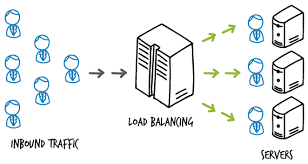Microsoft Azure Offers Load Balancing
- 2W Tech
- 2W Technologies
- Buffalo
- Chicago
- Cleveland
- Cloud
- Cloud Solutions
- Cloud Technologies
- Cloud-based software
- Disaster Recovery
- Erie
- IL
- Illinois
- IN
- Indiana
- Load balancer
- Load Balancing
- Manufacturer
- Manufacturing
- Meadville
- Microsoft
- Microsoft Azure
- Milwaukee
- New York
- NY
- OH
- Ohio
- PA
- Pennsylvania
- Pewaukee
- WI
- Wisconsin
Microsoft Azure Blog Series
Load balancing is when a device acts as a reverse proxy and distributes network or application traffic across several servers. Load balancers are used to increase capacity (concurrent users) and reliability of applications. They improve the overall performance of applications by decreasing the burden on servers associated with managing and maintaining application and network sessions, as well as by performing application-specific tasks. Load balancers ensure reliability and availability by monitoring the health of applications and only sending requests to servers and applications that can respond in a timely manner. You need at least two backend servers for high availability, and your load balancer will ensure that if one backend isn’t functioning, the traffic will be directed to the other backend.

Microsoft Azure provides multiple services for managing how network traffic is distributed and load balanced. Load Balancer is an integral part of the Azure SDN stack, providing high-performance, low-latency Layer 4 load-balancing services for all UDP and TCP protocols. It manages inbound and outbound connections. You can configure public and internal load-balanced endpoints and define rules to map inbound connections to back-end pool destinations by using TCP and HTTP health-probing options to manage service availability. Because Load Balancer is in front of the high-availability cluster, only the active and healthy endpoint for a database is exposed to the application. Additionally, a database administrator can optimize the workload by distributing active and passive replicas across the cluster independent of the front-end application. Load Balancer delivers connections to the high-availability cluster and ensures that only healthy databases receive connection requests.
Azure Load Balancer can:
- Give you control over how inbound communication is managed.
- Instantly reconfigure itself when you scale instances up or down.
- Can probe the health of the various server instances. When a probe fails to respond, the load balancer stops sending new connections to the unhealthy instances. Existing connections are not impacted.
Load balancing is just one benefit Microsoft Azure can bring to your business. 2W Tech is a Tier I Microsoft Cloud Solutions Provider and can help get your organization started reaping the benefits from Azure.
Read More:
Geographic Redundancy and Security and Your ERP
Kiss Your Hardware Goodbye
Finding Success in the Cloud
Enjoyed reading this article? Click the button below to download this asset.